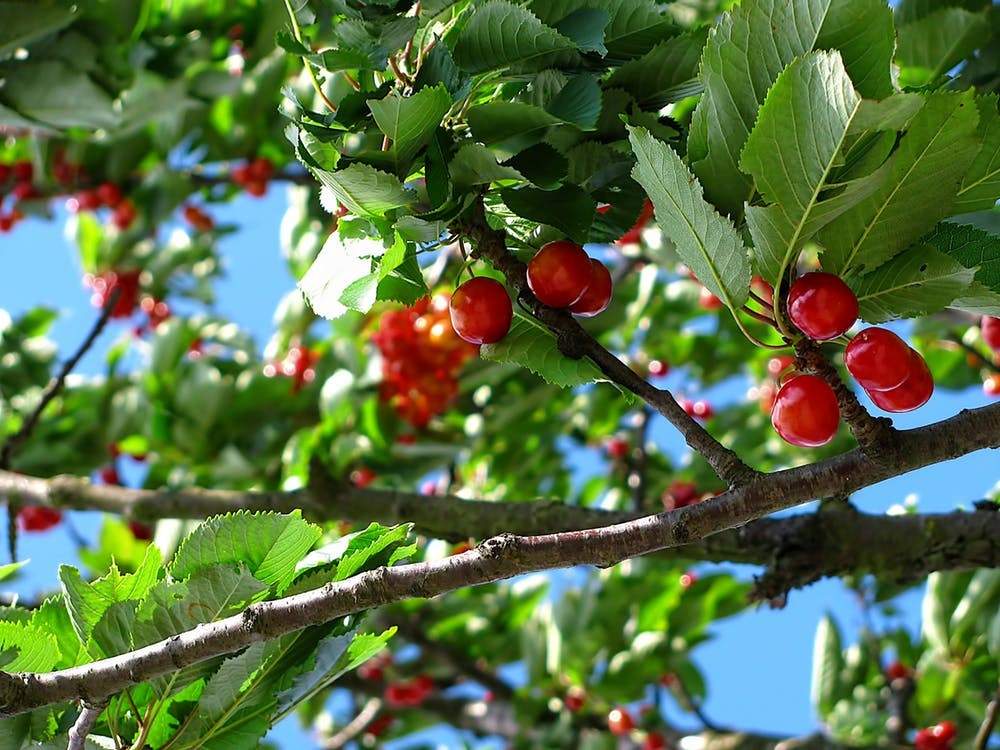The Properties of Cherry Wood
Contents |
Introduction
Cherry is a deciduous hardwood that possesses a fine, straight grain ranging from reddish brown to blond. The cherry tree itself can reach heights of 100 feet, or approximately 30 metres, although the average is 80ft (24 metres), with a tall trunk of around 24 inches (61 cm) in diameter. They can live for up to 100 years but are typically felled after 50 to 90 due to a susceptibility to rotting in their trunk.
Cherry, or American Black, grows in North America.
Properties of cherry wood
This type of wood is highly sought-after by both professionals and homeowners, as is a beautiful type of wood that is easy to work with. It also becomes darker and richer with age.
- Aesthetics: In terms of appearance, cherry wood is usually reddish brown with a golden hue, although when it is freshly cut it is paler. Its oxidisation creates the popular rich brown-red over time. The heart and sapwood of the cherry tree are easy to identify as the sapwood is narrow and yellowish to reddish, while the heart is yellowish to light red-brown.
- Texture: Cherry hardwood has a straight-grain, fine, uniform, satiny and smooth texture. It also has a moderate natural lustre.
- Workability: This type of wood is also known for its great workability, mainly due to its straight-grained qualities. Because the wood can become blemished when it is being stained, many people first prepare it before it undergoes the staining process; typically, a sanding sealer or a gel-based stain is suggested.
- Durability: Cherry hardwood is a moderately durable wood; its heart is very resistant to rot and decay.
- Strength: Cherry hardwood is also moderately strong and has a medium ability to resist shock loads.
- Flexibility: It is easy to cut, carve and mould, and is used for many different applications due to its flexibility. It has medium density and good bending properties, as well as low stiffness.
- Structure: Cherry possesses a fine pore structure in general, though the spring growths’ pores are slightly larger. This makes it easy to discern the various rings in the wood.
Applications for cherry wood
Cherry is used in a variety of styles, and has also been called New England mahogany. It is often used to craft 18th century Colonial and French Provincial designs in the USA. This type of hardwood can have many different applications, therefore, including:
- Furniture (such as kitchen cabinets).
- Mouldings.
- Millwork.
- Flooring.
- Doors.
- Boat interiors.
- Musical instruments (such as pianos and violin bows).
- Turnings.
- Carvings.
- Veneers.
- Joineries.
Cherry hardwood is cheaper than walnut wood and more workable than maple and oak, and is fairly rare in the sense that it is not harvested as often as other types of wood. Its flexibility, array of colours and patterns, and other physical properties make cherry one of the most versatile woods to use in a range of applications.
Find Out More
Related articles on Designing Buildings Wiki
- 11 things you didn't know about wood.
- Ancient Woodland.
- Chip carving.
- Confederation of Timber Industries.
- Cross-laminated timber.
- Definition of tree for planning purposes.
- Engineered bamboo.
- European Union Timber Regulation.
- Forest Stewardship Council.
- Glulam.
- Laminated veneer lumber LVL.
- Oak wood properties.
- Pine wood.
- Plywood.
- Programme for the Endorsement of Forest Certification.
- Properties of mahogany.
- Sapele wood.
- Timber.
- Timber preservation.
- Timber v wood.
- Tree preservation order.
- Tree rights.
- Types of timber.
- Walnut.
- Physical Properties of Wood
- The Properties of Birch Wood
- The Properties of Cedar Wood
- The Properties of Wood Ash
- The Scientific Properties of Wood
--G&S Specialist Timber 08:59, 13 Nov 2017 (BST)
Featured articles and news
Homes England supports Greencore Homes
42 new build affordable sustainable homes in Oxfordshire.
Zero carbon social housing: unlocking brownfield potential
Seven ZEDpod strategies for brownfield housing success.
CIOB report; a blueprint for SDGs and the built environment
Pairing the Sustainable Development Goals with projects.
Types, tests, standards and fires relating to external cladding
Brief descriptions with an extensive list of fires for review.
Latest Build UK Building Safety Regime explainer published
Key elements in one short, now updated document.
UKGBC launch the UK Climate Resilience Roadmap
First guidance of its kind on direct climate impacts for the built environment and how it can adapt.
CLC Health, Safety and Wellbeing Strategy 2025
Launched by the Minister for Industry to look at fatalities on site, improving mental health and other issues.
One of the most impressive Victorian architects. Book review.
Common Assessment Standard now with building safety
New CAS update now includes mandatory building safety questions.
RTPI leader to become new CIOB Chief Executive Officer
Dr Victoria Hills MRTPI, FICE to take over after Caroline Gumble’s departure.
Social and affordable housing, a long term plan for delivery
The “Delivering a Decade of Renewal for Social and Affordable Housing” strategy sets out future path.
A change to adoptive architecture
Effects of global weather warming on architectural detailing, material choice and human interaction.
The proposed publicly owned and backed subsidiary of Homes England, to facilitate new homes.
How big is the problem and what can we do to mitigate the effects?
Overheating guidance and tools for building designers
A number of cool guides to help with the heat.
The UK's Modern Industrial Strategy: A 10 year plan
Previous consultation criticism, current key elements and general support with some persisting reservations.
Building Safety Regulator reforms
New roles, new staff and a new fast track service pave the way for a single construction regulator.























